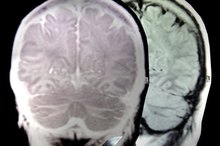What does fact checked mean?
At Healthfully, we strive to deliver objective content that is accurate and up-to-date. Our team periodically reviews articles in order to ensure content quality. The sources cited below consist of evidence from peer-reviewed journals, prominent medical organizations, academic associations, and government data.
- National Institutes of Health, PubMed: Cardiorespiratory fitness and preserved medial temporal lobe volume in Alzheimer disease
- National Institutes of Health, PubMed: Cardiorespiratory fitness and preserved medial temporal lobe volume in Alzheimer disease
The information contained on this site is for informational purposes only, and should not be used as a substitute for the advice of a professional health care provider. Please check with the appropriate physician regarding health questions and concerns. Although we strive to deliver accurate and up-to-date information, no guarantee to that effect is made.
Ways to Exercise the Temporal Lobe
Your brain's temporal lobe organizes your sensory input, according to the Centre for Neuro Skills. Damage can result in language dysfunction, sensory input disorganization, loss of memory and damage to visual/spatial fields. Ways to exercise temporal lobe vary from increasing your heart rate to stimulating mental processes. Exercises can be done in the comfort of your home. Depending upon your individual situation, check with your doctor prior to starting any new exercise regime.
Engage in Cardiorespiratory Fitness
Exercising your cardiovascular system can help temporal lobe function, according to PubMed of the National Institutes of Health 1. Cardiorespiratory exercises-exercises that increase your heart rate for an extended period of time- may also enhance activity in the medial temporal lobe area 1. Known as aerobic exercise, these exercises can increase attention efficiency, improve executive-control processes and improve cognitive function levels. Exercise may help control age-related brain changes in older adults and potentially hinder the development of Alzheimer's Disease. Individuals engaged in regular aerobic exercise decrease their risks of developing dementia, as exercise counteracts atrophy of medial temporal lobe areas. Cardiorespiratory exercises include:
- dancing
- walking
- rowing
- jogging
- skiing
- swimming
- aerobic exercise
Increasing everyday activity intensity can help as well. Activities such as leaf raking, snow shoveling, house painting and gardening supply beneficial exercise. Achieve the best cardiovascular/respiratory effects by exercising 30 minutes five or more days weekly. In initial stages of temporal lobe injury, aerobic exercise may need to be done in a rehabilitative setting, according to the Traumatic Brain Injury Recovery Center.
- Exercising your cardiovascular system can help temporal lobe function, according to PubMed of the National Institutes of Health 1.
- Known as aerobic exercise, these exercises can increase attention efficiency, improve executive-control processes and improve cognitive function levels.
Play Video Games
Physical, Social, Emotional & Intellectual Benefits of Outdoor Recreation
Learn More
Temporal lobe injury can affect the attention span and visual area, according to the Centre for Neuro Skills. Cognitive rehabilitation exercises are proven to improve attention span capabilities. This can be accomplished through playing fast-paced video games, which increase contrast sensitivity in gamers. Daphne Bavelier, professor of brain and cognitive sciences at the University of Rochester, notes that fast-paced games may be able to retrain the visual cortex to gain a better understanding of information it receives. Studies performed by Bavelier demonstrate improvement in visual perception and attention capabilities that last for months after game play has ceased. Games that feature fast-moving objects while being aware of the surrounding area, such as first-person shooter games, rank highest for improving visual attention, according to Disabled World 2.
- Temporal lobe injury can affect the attention span and visual area, according to the Centre for Neuro Skills.
- Games that feature fast-moving objects while being aware of the surrounding area, such as first-person shooter games, rank highest for improving visual attention, according to Disabled World 2.
Play Word Games
Damage to the temporal area may affect language comprehension, according to the Centre for Neuro Skills, and can be stimulated through participating in cognitive rehabilitation exercises that focus on improving language skills. Word games fall into this category, as do board games and crossword puzzles. Once you accomplish one level of difficulty, advance to the next. The key to improving brain function is through incorporating lasting, positive changes, according to Disabled World.
- Damage to the temporal area may affect language comprehension, according to the Centre for Neuro Skills, and can be stimulated through participating in cognitive rehabilitation exercises that focus on improving language skills.
Related Articles
References
- National Institutes of Health, PubMed: Cardiorespiratory fitness and preserved medial temporal lobe volume in Alzheimer disease
- Disabled World: Video Games to Improve Vision
- Centers for Disease Control and Prevention. Stroke facts. Updated September 6, 2017.
- Wong SB, Hung WC, Min MY. The Role of Gastrodin on Hippocampal Neurons after N-Methyl-D-Aspartate Excitotoxicity and Experimental Temporal Lobe Seizures. Chin J Physiol. 2016;59(3):156-64.
Writer Bio
Crystal Welch has a 30-year writing history. Her more than 2,000 published works have been included in the health and fitness-related Wellness Directory, Earthdance Press and Higher Source. She is an award-winning writer who teaches whole foods cooking and has written a cookbook series. She operates an HON-code-certified health-related blog with more than 95,000 readers. Welch has a B.B.A. from Eastern Michigan University.








